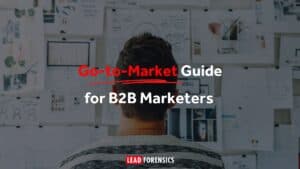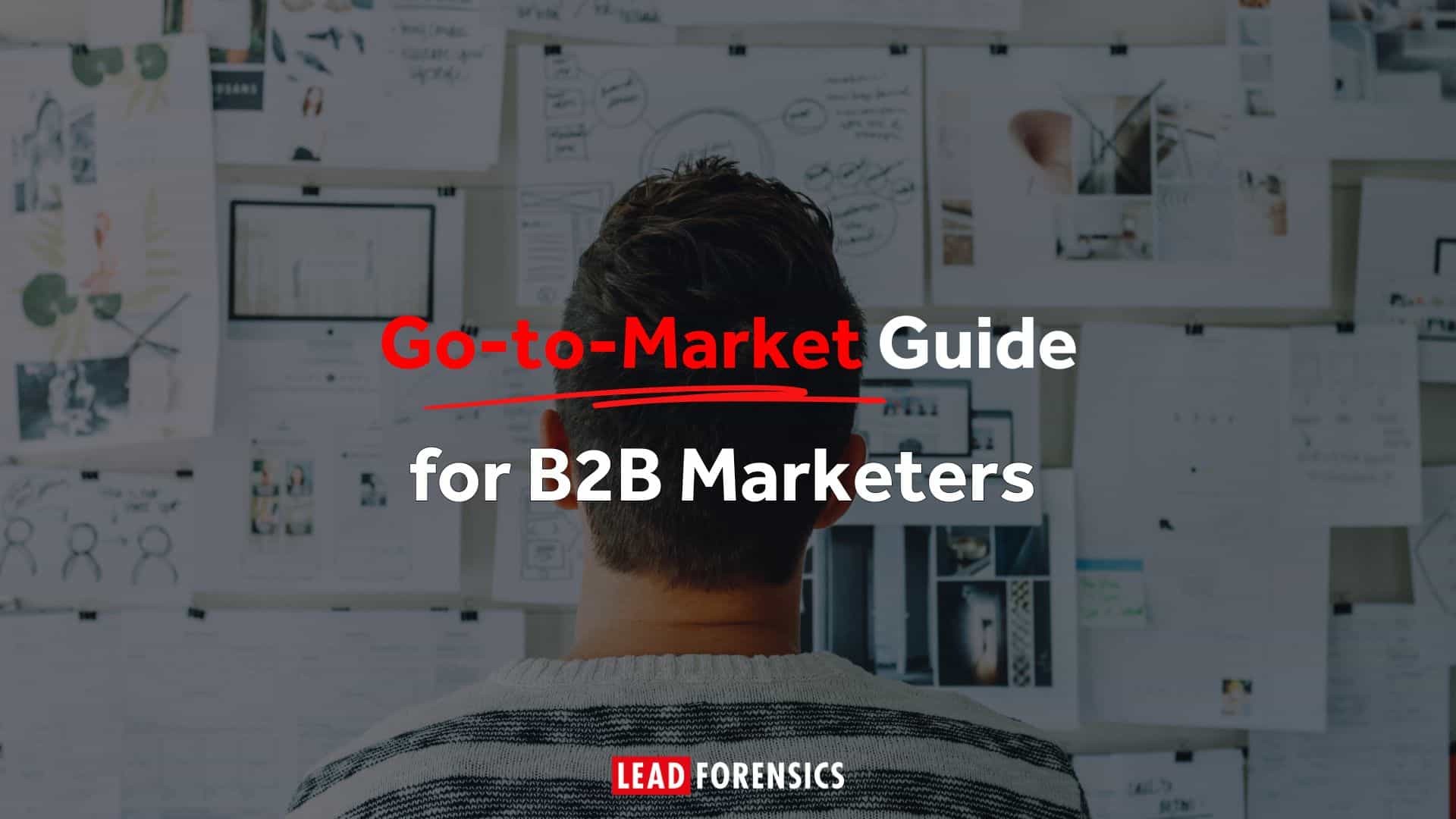The foundation of successful account-based marketing (ABM) is relevance. It doesn’t matter how advanced your tech stack is, or how sophisticated your segmentation becomes; if the message isn’t relevant, your ABM won’t work.
When you align your message with the priorities and goals of your target business(es), you’ll grab their attention and win their conversion.
But to do so, you need to anchor your activity in strategy, collaboration and a true understanding of your prospect.
Find out what else you can do to improve your ABM conversion rates in our webinar, or read the summary of the conversation below.
Remember: ABM is Not Lead Gen
Many B2B marketers will start their ABM journey by choosing a tool and retrofitting their strategy to suit their new software. It’s back-to-front and often means they end up amplifying their lead generation activities at scale, instead of building a true ABM strategy.
With ABM, the goal is to convert a prospect into a revenue-paying customer at an accelerated rate. It’s not for top-of-funnel activity like demand generation; it’s for progressing leads and making sure you win the business before your competitors do.
It’s important to remember that tech is an enabler, not a strategy. Your ABM campaigns will fail if you shape the plan around your tools.
Instead, you need to build an ABM strategy across the entire journey, from initial engagement to revenue realization. Start with the business goal, build a plan that aligns with it, and then bring in tech to scale what already works.
True ABM Is Revenue-Centric
Instead of measuring impressions, clicks, or MQAs, track metrics like:
- Stage progression velocity
- Win rates by segment
- Contract value growth (ACV/ARR)
- Churn reduction in target accounts
- Margin improvement across Tier 1 accounts
“We have to make sure that we’re always focusing on revenue metrics,” explained Kristina Jaramillo, President of Personal ABM.
This reframing of ABM targets helps you treat the discipline like a business strategy and not just a marketing tactic. And if you focus your energy on stalled deals, disengaged key accounts, at-risk renewals and low-margin growth opportunities, you’ll be able to measure the very real improvements you make to revenue. Because after all, ABM should help you close more deals.
Personal > Personalized
There’s a critical difference between content that’s personalized, and content that’s personal. The former speaks to segments, while the latter speaks to people.
Most ABM content targets industries, job titles, or common pain points. But B2B buying committees are made up of real people with unique goals, internal politics, and career motivations. That’s why generic messaging rarely breaks through.
Being personal means tailoring messages based on:
- What’s happening inside that company
- The specific department’s goals or blockers
- That stakeholder’s role within the buying committee
It’s not scalable for every account, but it is essential for high-value or stuck deals.
ABM Needs Content That Moves, Not Just Informs
Thought leadership has become table stakes in B2B. But as Christina notes, thought leadership often confirms what your buyers already know. It rarely changes minds.
“It tells the audience that they’re smart and up-to-date… but it doesn’t change the selling conversation,” said Kristina.
To take it a step further, your ABM content should do more than educate; you need to make the case for change. You should highlight the gaps in your prospect’s current approach, reframe their risk, and introduce commercial insight that creates urgency.
This shift involves:
- Adding data or perspective your buyer hasn’t considered
- Illustrating downstream impact across teams or customers
- Positioning yourself as a partner who’ll help them meet their goals, not just another service to add to their growing list.
Sales + Marketing + Success = Real ABM
For ABM to work, everyone needs to be aligned. True ABM brings together marketing, sales, and customer success to identify target accounts, align messaging, and orchestrate outreach. It’s not just about net-new; ABM should cover expansion, retention, and revival of disengaged accounts.
“Revenue is everyone’s responsibility—not just sales, not just a little bit of marketing,” advised Kristina.
Signs of strong alignment include:
- Joint account selection and ideal customer profile (ICP) definition
- Shared metrics tied to revenue outcomes
- Coordinated content and messaging strategies
- A common language of value (not just MQLs)
If marketing is focused on impressions while sales cares about close rates, you’ve got a disconnect.
ABM Account Selection Is a Team Effort
Too often, account selection is led by marketing intent data or sales hunches, but rarely both. But when you use cross-functional account selection, you factor in the experience of marketing intel and sales experience. This generates more qualified, winnable targets.
“We’re quick to disqualify accounts,” explained Kristina. “If there’s no strong reason to pursue them, they don’t belong in the program.”
Effective ABM starts with building a business case for every account you target. This includes:
- ICP fit and intent signals
- Strategic relevance (industry shifts, M&A, growth targets)
- Internal champions or relationships
- Revenue potential and expansion opportunity
Measure What Matters
To earn long-term investment in ABM, you need to show commercial impact, not just marketing activity.
Key metrics should align to:
- Pipeline progression (are deals moving faster?)
- Close rate improvement (are more deals being won?)
- Deal size uplift (are bigger deals being closed?)
- Churn prevention and account growth (are you retaining more clients?)
“Your ACV should be at least one or two times higher with ABM,” advised Kristina. “We should be reducing churn and creating more profit growth with higher margins.”
Scale Smart, Not Fast
It’s tempting to scale ABM quickly with AI or programmatic tools. But without a solid foundation, you’re more likely to amplify noise than any wins.
“Start with one-to-one and see what’s working,” Kristina recommended. “Then you can scale to one-to-few or one-to-many with confidence.”
The first step is to pilot ABM on a few high-value accounts. This lets you learn how to hone your messaging, processes, and alignment with greater focus.
When you’re ready, you can explore scaling what works—but make sure you don’t lose your personalization along the way.
Get Alerts When Target Prospects Are On Your Site
If you use website visitor identification software like Lead Forensics, you can see which of your ABM targets are browsing your website and which pages they look at. Plus, you can set up alerts to be notified when these target prospects visit your site. Book your Lead Forensics demo now to see how the platform can help with ABM success.









